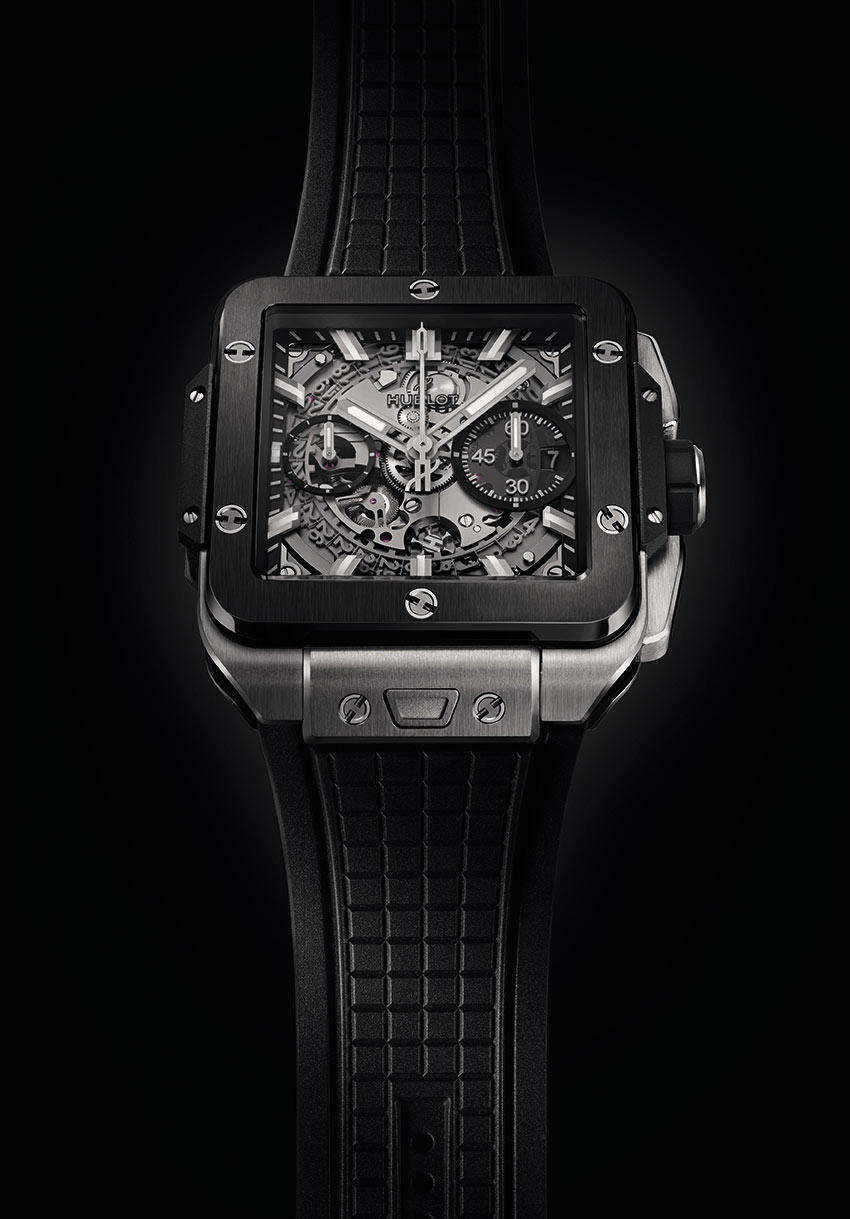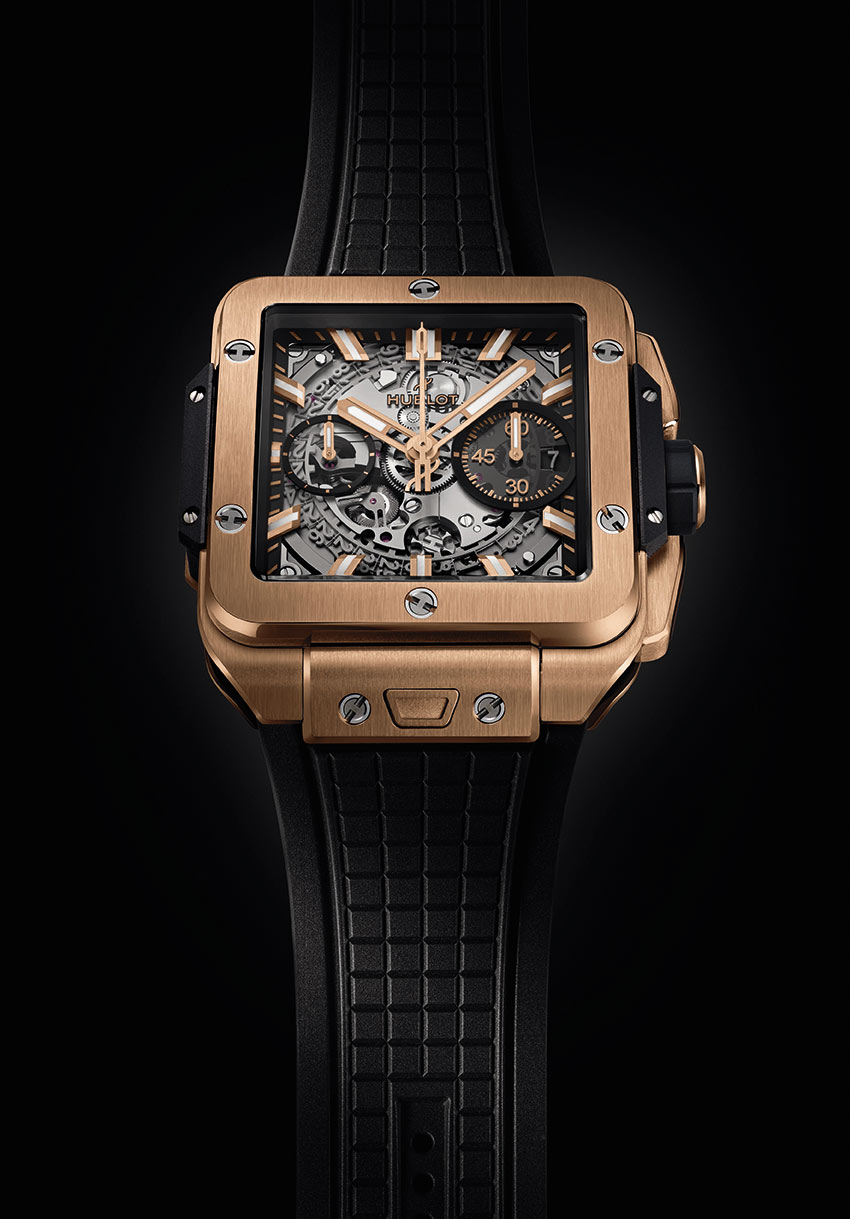Patek Philippe 1/10th Second Monopusher Chronograph 5470P
Patek Philippe unveils its first wrist chronograph for tenths-of-a-second short-time measurements with a new, very precise high-performance movement.
The manufacture reasserts its competence and innovative spirit in the field of short-time measurement: it presents a manually wound movement with two separate chronograph mechanisms and sweep hands. One of them indicates tenths of a second – precisely and very crisply. This high-tech high-frequency caliber (5 Hz) with 31 patents, of which seven new patents are specific to the new mechanism, ticks in a platinum case with a blue dial and red accents. Its sporty design emphasizes the highly technical and performance-oriented facets. With this tenthof-a-second monopusher chronograph produced in small series – it is just as difficult to craft as a tourbillon, a minute repeater, or a split-seconds chronograph – Patek Philippe is delighting connoisseurs and enthusiasts with a new attraction in the domain of grand complications.
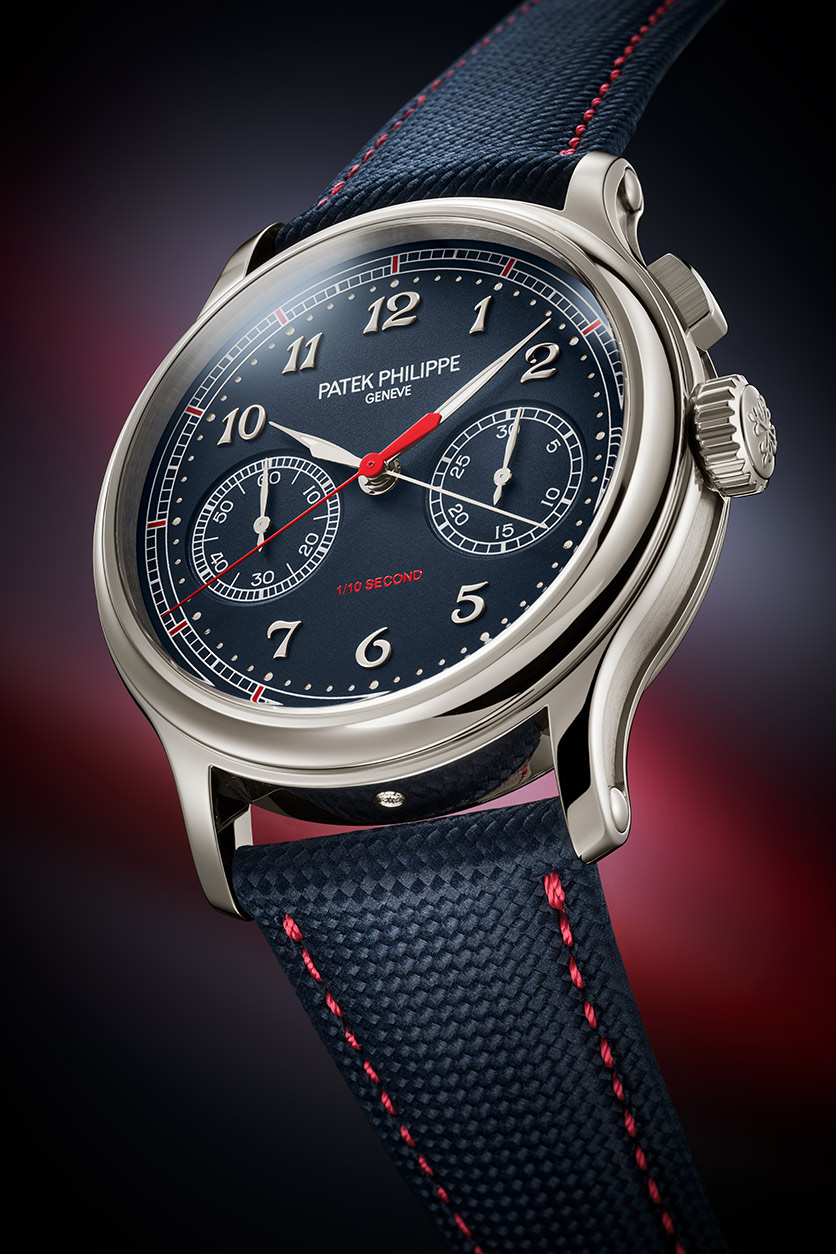
At Patek Philippe, chronographs have a rich, long-standing tradition. Since 1856, the manufacture has stood out with the sublime assets of its pocket chronographs with or without rattrapante hands, often in combination with other complications such as perpetual calendars or minute repeaters. In ca, 1930– 1931, the manufacture even developed a pocket watch with a tenth-of-a-second chronograph; today, it can be admired in the Patek Philippe Museum (Inv. P-340). As early as 1923, in response to a commission, Patek Philippe had already crafted its first split-seconds chronograph. This single piece was followed starting in 1927 by the first regularly produced wrist chronographs with or without rattrapante hands, among them the legendary Ref. 130 which was made from 1934 onward to the early 1960s.
The first decades of the third century were particularly prolific in the field of short-time measurement. As from 2005, Patek Philippe developed an extensive suite of chronograph movements with and without additional complications (rattrapante hands, minute repeaters, perpetual calendars, Annual Calendars, World Time) that were all designed and crafted in the manufacture’s ateliers. These chronograph movements feature numerous innovations and patented optimizations. Today, they are embedded in a regular collection with over 20 different models for ladies and gentlemen.
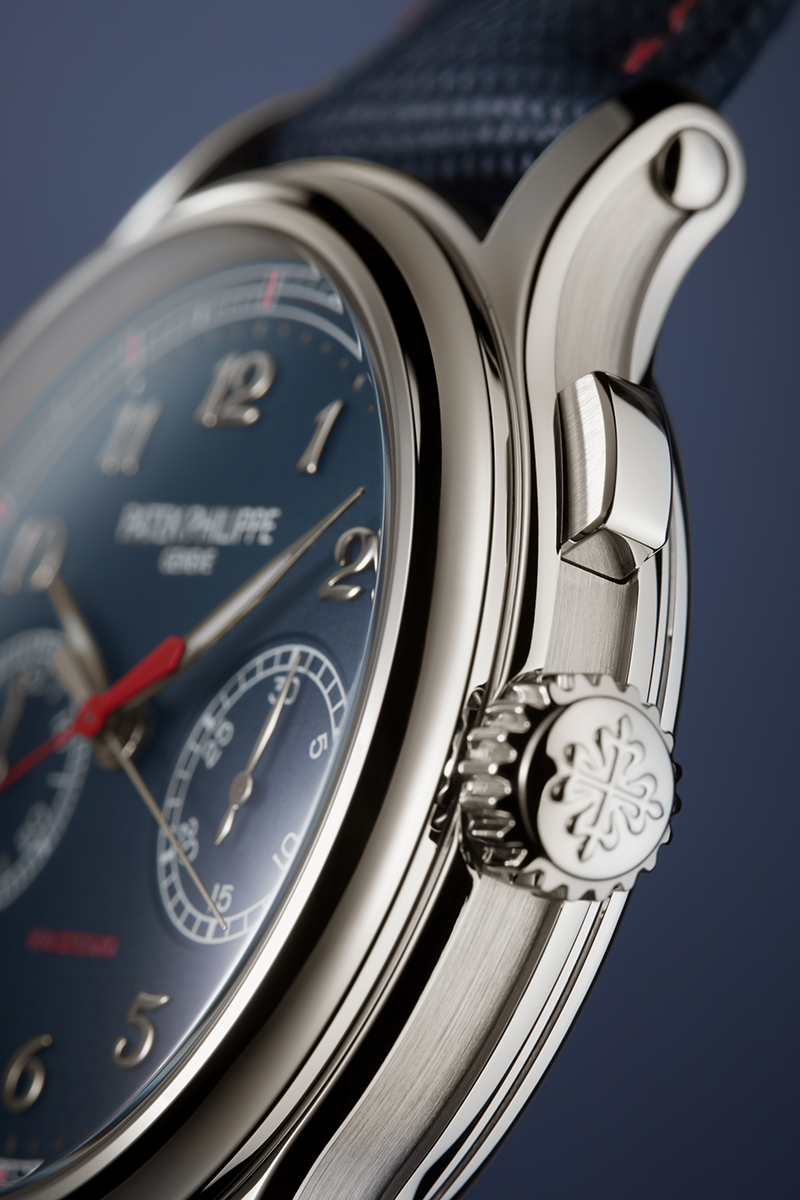
The first task was to increase the frequency of the movement. With a frequency of 4 Hz (28,800 semioscillations per hour that let the movement and the chronograph hands execute 8 jumps per second), the caliber CH 29-535 PS can merely measure eights of a second. Conversely, the new caliber CH 29- 535 PS 1/10 beats at a frequency of 5 Hz (36,000 semi-oscillations per hour for 10 jumps per second) and thus allows the measurement of tenths of a second. This is a premiere for a Patek Philippe wrist chronograph but it also requires more energy.
But a sweep seconds hand alone and a frequency of 5 Hz would not be sufficient to display tenths of a second with the desired accuracy. The dial of a wristwatch does not provide enough space for a scale with a microscopically tight tenths-of-a-second graduation. The designers thus resolved to provide the caliber CH 29-535 PS 1/10 with two independent chronograph mechanisms: one for the seconds and the instantaneous 30-minute counter, the other exclusively for measuring and displaying stopped tenths of a second.
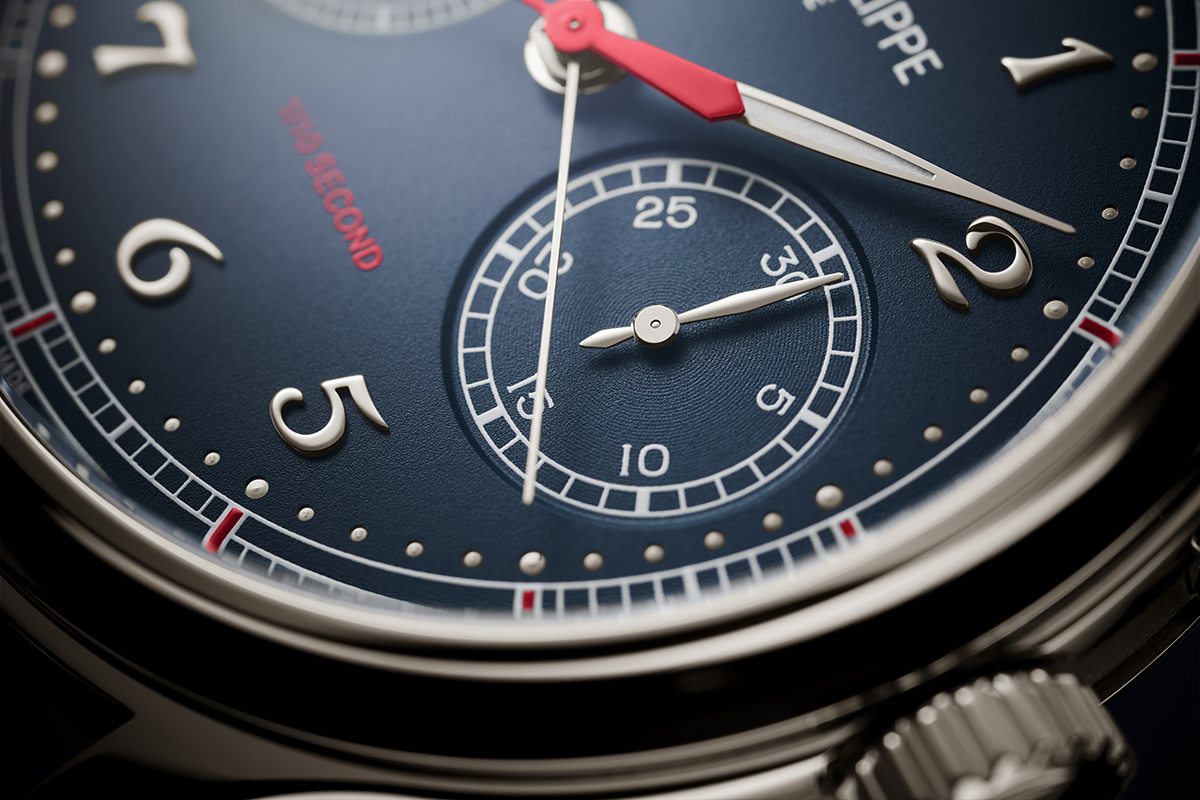
The engineers therefore conceived a patented system that displays the measured seconds and the fractions of a second concentrically. The watch features two sweep chronograph hands, each of them driven by an independent mechanism. The hand that performs a complete revolution per minute shows the stopped seconds in the traditional manner. The other hand (lacquered red in the new Ref. 5470P001) performs one revolution per 12 seconds, i.e. five times faster than an ordinary chronograph hand and sweeps across 12 sectors subdivided into tenths. In this way, the user can immediately read the elapsed seconds guided by the pearl markers and then, on the outer railway track scale, read the number of elapsed tenths of a second departing from the last red marker. The minutes of the short-time measurement are displayed by the instantaneous 30-minute counter on the subsidiary dial at 3 o’clock.
Given so much simplicity in use, the patented system’s heart is a true treasure chest of ingenious solutions in the movement but out of sight. As usual, Patek Philippe raised the bar and specified that the new caliber should meet ambitious requirements in every respect. The watch should not only be able to measure and display tenths of a second but also retain this precision during a 30-minute run of the chronograph. Additionally, the caliber CH 29-535 PS 1/10 had to be built as compactly as possible while retaining the diameter of the base caliber (29.6 mm) and allowing only a slight height increase (from 5.35 mm to 6.96 mm) – despite the two chronograph mechanisms and a total of 396 parts. As a true accomplishment in miniaturization, this new movement is even shorter than the rattrapante caliber CHR 29-535 PS (7.1 mm).
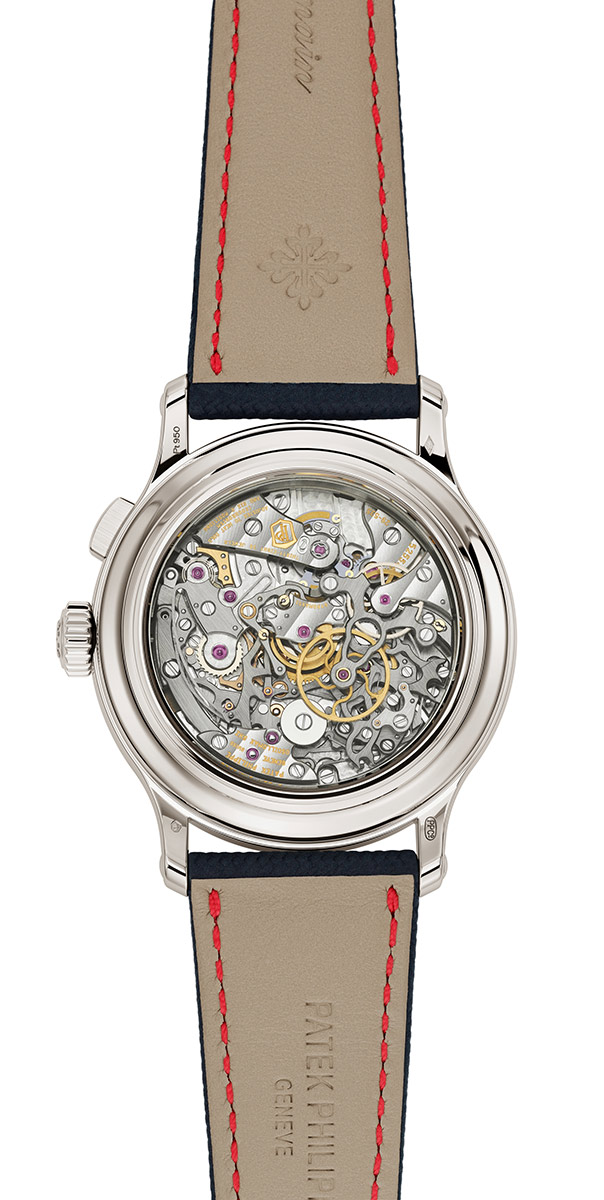
And of course, the term “precision” dominated the entire development of the movement. The challenge began with a single mainspring that was needed to provide energy for the whole movement. Patek Philippe reworked this component and increased its efficiency to preserve the amplitude of the balance spring as much as possible and to assure optimized rate stability. To increase the available energy and boost the power reserve, the diameter of the barrel arbor was reduced and the number of mainspring coils increased. A patented notch reduces the tension of the slip bridle during the winding process, thus eliminating the risk of damage due to the increased force.
The mechanism for displaying the tenths of a second receives its energy via a driving wheel from the fourth wheel of the base movement. Patek Philippe designed the driving wheel in a novel two-part arrangement: the upper wheel with flexible spokes, the lower one with rigid spokes. Thanks to this patented anti-backlash principle that is both compact and energy-saving, the teeth of the driving wheel exert an elastic force on the clutch wheel, eliminating any risk of hand vibration.
As soon as the chronograph is started, the tenth-of-a-second driving wheel (with one revolution per minute) engages with the tenth-of-a-second pinion that performs one revolution in 12 seconds (turning five times faster). To enable this “acceleration”, Patek Philippe provided the tenth-of-a-second pinion with microtoothing: 136 teeth on a pinion diameter of 1.469 mm and with a tooth height of 30 µm. The pretensioning force exerted by the clutch wheel on the pinion suppresses tooth backlash. Many individual measures maximize the accuracy of the display.
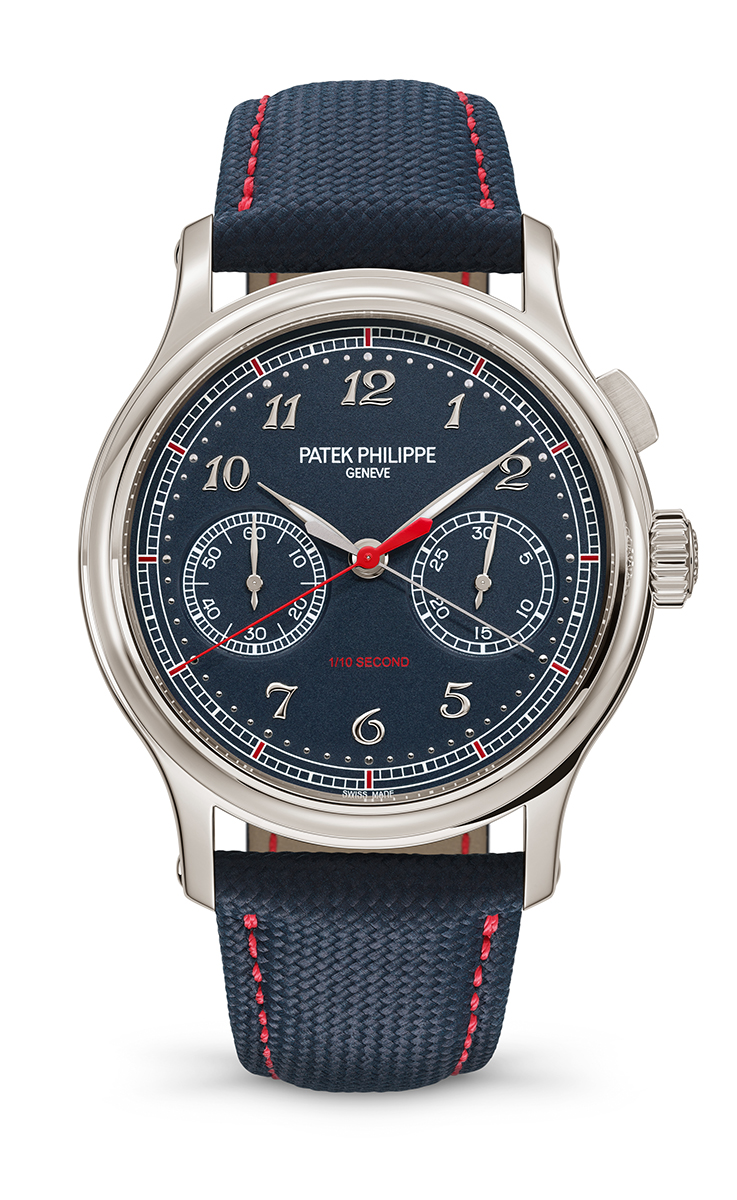
The sapphire-crystal case back (interchangeable with the solid platinum back delivered with the watch) affords a spectacular view of the caliber CH 29-535 PS 1/10 with its filigreed components and the elaborately executed finissage (bridges with chamfered and polished edges, Geneva striping, etc.). The engraved, gilt inscriptions “Oscillomax 5 Hz” and “GyromaxSi” on the bridges refer to the innovative movement components.
The elegant blue of the dial harmonizes exceptionally well with the shimmering reflections of the platinum case, at the same time offering the perfect contrast for the crisp legibility of the individual displays. The chronograph seconds are indicated with a sandblasted and rhodiumed steel hand on a minute scale with small gold pearls. The tenths of a second are displayed with a slender hand in Silinvar®. Because it is so lightweight, the high-tech material saves energy but has the rigidity needed to withstand the shock that occurs when the chronograph is abruptly stopped. Thanks to a new patented process for decorating the Silinvar® hand, in this case lacquered red, and a second patent concerning the attachment of the pipe to the Silinvar® hand by brazing, Patek Philippe succeeded for the first time in using the promising material for external features of a watch. The red color of the hand is also echoed on the markers of the railway-track scale for reading tenths of a second. As long as the chronograph is not operating, the red and gray chronograph hands are superposed and look like a single hand. Once a short-time measurement has been started with the pusher at 2 o’clock, it launches its fascinating ballet with two separate rotation speeds. The instantaneous 30-minute counter at 3 o’clock and the small seconds at 9 o’clock have crisp railway-track scales to improve the legibility of the respective information.
The new 5470P-001 is worn on a navy blue calfskin strap with an embossed fabric pattern and red decorative seams in perfect harmony with the colors of the dial. Its fold-over clasp in platinum assures comfort and safety on the wrist.
The seven patents of the new caliber CH 29-535 PS 1/10 movement
• Concentric display (Patent WO2012104688A1) This display mode based on two sweep hands assures simple, swift, and safe legibility of seconds and fractions of a second.
• Chronograph with shock-absorber hook (Patent WO2015173372A2) In the event of a shock, this system securely holds the clutch rocker of the operating chronograph mechanism to prevent disruptions of the ongoing short-time measurement.
• Pendulum shock absorber (Swiss Patent CH713473A2) This system utilizes the acceleration forces of shocks on the watch to keep the components of a mechanism in the desired position and thus to assure correct functionality.
• Surface primer for the silicon hand (European patent application EP3764167A1) With a fine primer coating (e.g. PVD or CVD), this process improves the adhesion of lacquer on a siliconoxide surface (Silinvar®).
• Assembly process for watch components (European patent EP 3309624 B1) Thanks to a multi-layer metal coating, this process for joining two base materials, one of which nonmetallic, allows the pipe of a Silinvar® hand to be brazed.
These patents are complemented by the six patented innovations for the caliber CH 29-535 PS introduced in 2009, the 17 patents for the development of the high-tech Oscillomax® ensemble (2011), and the patent for the optimized Spiromax® balance spring with a terminal curve and an inner boss (2017).
As a veritable concentrate of innovations, the new caliber CH 29-535 PS 1/10 unites a total of 31 inventions developed and patented by Patek Philippe – all in the first twenty years of the 21st century

















